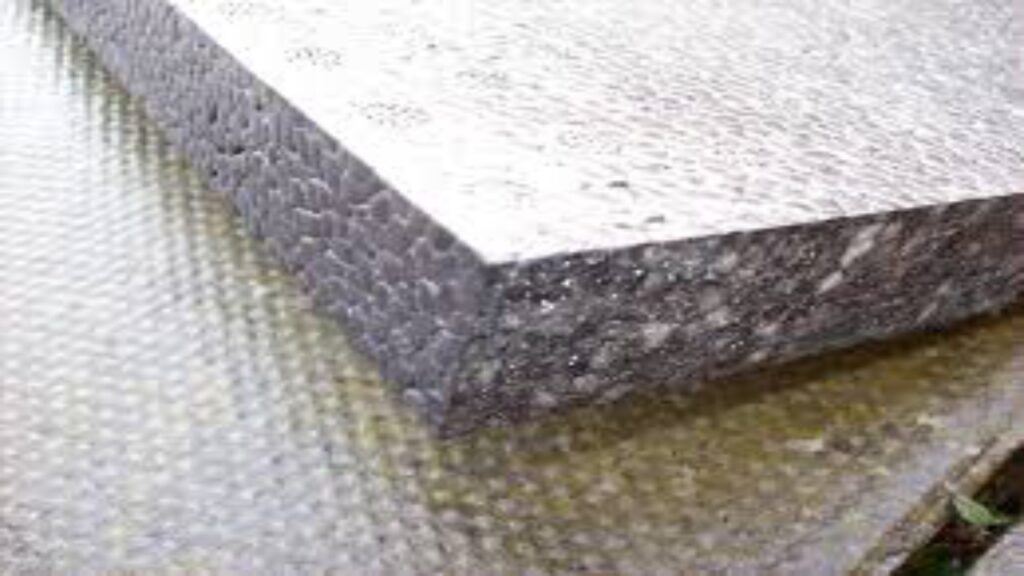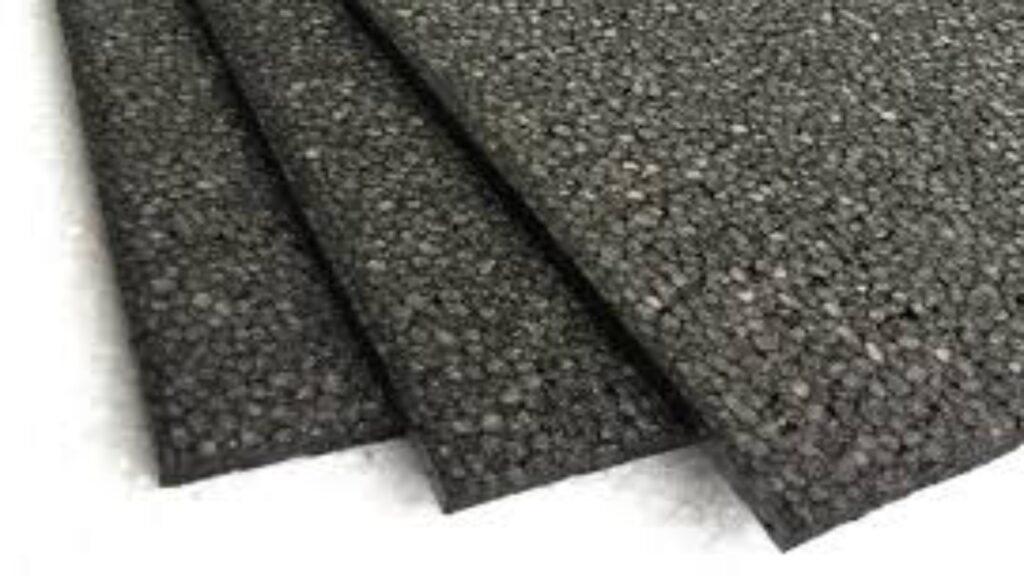In today’s industrial manufacturing, packaging protection and special applications, foam materials play an indispensable role.
Among them, EPO (Expanded Polyolefin) and EPP (Expanded Polypropylene) foam materials have attracted much attention due to their unique performance characteristics.
Understanding the differences between EPO and EPP foams in physical properties, production processes, application areas, cost-effectiveness and environmental impact can help you make wise material selection decisions.
Basic introduction of EPO and EPP foam
What is EPO Foam?
EPO (Expanded Polyolefin) foam is a closed-cell polyolefin foam material made from a copolymer of polyethylene (PE) and polypropylene (PP) through a physical or chemical foaming process.
This material combines the flexibility of PE with the rigidity of PP to create a foam product with balanced performance.
EPO foam usually presents a uniform closed-cell structure with a medium density range (about 30-300kg/m³), a relatively smooth surface, and is easy to perform secondary processing and surface treatment.
The development of EPO foam began in the 1990s, initially to fill the performance gap between EPS (polystyrene foam) and EPP in certain applications.
With the improvement of formulation and process, EPO has gradually gained a solid market position in the fields of automotive parts, sports equipment and packaging.
What is EPP foam?
EPP (Expanded Polypropylene) foam is a polypropylene-based foaming bead material manufactured through a compression molding process.
Unlike EPO, EPP has a unique bead fusion structure, where each expanded PP bead fuses with each other under high-temperature steam to form the final product.
This structure gives EPP excellent energy absorption and shape recovery.
The history of EPP material can be traced back to the 1980s, when it was originally developed and commercialized by JSP Corporation of Japan.
After decades of development, EPP has become an important material in the automotive industry, high-end packaging and consumer goods.
Its density ranges from ultra-light 20kg/m³ to high-density 200kg/m³, which can be precisely controlled according to application requirements.
Market Application Overview
In the global foam material market, EPP currently occupies a large share, especially in the automotive industry and high-end packaging.
According to the latest industry report, the EPP market value is expected to grow from approximately US$850 million in 2022 to US$1.32 billion in 2028, with a compound annual growth rate of approximately 7.6%.
In contrast, the EPO market is smaller but has stable growth, mainly due to its cost advantages and mid-range performance in specific applications.
In terms of geographical distribution, the Asia-Pacific region is the largest consumer market for EPP and EPO, accounting for more than 45% of global demand, mainly due to the booming automotive manufacturing industries in China, Japan and South Korea.
The European and North American markets pay more attention to the sustainability and recycling performance of materials, which provides impetus for the innovative application of the two materials.
Production process and technology comparison

Production process of EPO foam
The manufacturing process of EPO foam usually adopts continuous extrusion.
First, the copolymer particles of polyethylene and polypropylene are mixed with a foaming agent (such as physical foaming agent carbon dioxide or chemical foaming agent azo compound), and then heated to a molten state in an extruder.
When the molten material is extruded through the die, the pressure is suddenly released, and the foaming agent dissolved in the polymer expands rapidly to form a uniform closed-cell foam structure.
The key control parameters in EPO production include:
Temperature control: Accurately control the temperature of each temperature zone of the extruder (usually 180-230℃)
Pressure management: Maintain sufficient melt pressure to prevent premature foaming
Cooling rate: Affects the size and uniformity of the cell distribution
Formulation adjustment: PE/PP ratio, use of nucleating agents and additives
The advantage of this process is that it can produce continuous lengths of foam sheets or profiles, with high production efficiency and less waste.
However, the product shape is limited by the extrusion die design, and it is difficult to manufacture complex three-dimensional structures.
Production process of EPP foam
The production of EPP foam adopts a unique compression molding process, which is mainly divided into three steps:
- Pre-foaming: PP beads (about 2-3mm in diameter) containing foaming agent are heated in steam to expand the beads to 5-10 times the required density. Controlling the foaming temperature (100-130℃) and time is crucial at this stage.
- Ripening: The pre-foamed beads are placed in the air for 6-48 hours to balance the internal pressure with the atmosphere and allow the foaming agent to further diffuse and distribute.
- Compression molding: The conditioned beads are filled into the mold and passed through high-temperature steam (110-140℃). The beads expand again and fuse with each other, and then cool to form the final product.
The particularity of EPP process lies in:
- Can produce extremely complex three-dimensional shapes
- Product density can be designed differently in different parts
- Mold costs are high but suitable for mass production
- The production cycle is relatively long (usually 2-5 minutes/mold)
The impact of technological differences
The fundamental difference between the two production processes leads to significant differences in product performance and application scenarios:
- Structural properties: EPO’s uniform closed-cell structure provides consistent mechanical properties; EPP’s bead fusion structure is anisotropic and exhibits a unique progressive collapse when under pressure.
- Design freedom: EPP can manufacture complex geometries and thin-walled structures (minimum wall thickness is about 3mm); EPO is limited to relatively simple extrusion profiles.
- Production economy: EPO has more cost advantages in small-batch production; EPP has significantly lower unit costs in large batches (annual output > 100,000 pieces).
- Material utilization: EPO production waste is about 3-5%, which is basically recyclable; EPP molding produces flash waste of up to 5-15%, but the recycling system is mature.
Comparison of physical properties and mechanical characteristics
Density range comparison
Both EPO and EPP foams are available in a variety of density options, but they differ in their standard ranges:
- EPO foam: Usually the density is between 30-300kg/m³, and the most common commercial specifications are 60-120kg/m³.
The density uniformity is excellent, and the density deviation of the same batch of products is usually less than 3%. - EPP foam: The density range is wider, from ultra-light 20kg/m³ to high-density 200kg/m³. Special formulas can even reach 250kg/m³. Due to the characteristics of the bead structure, the density of different parts may vary by 5-8%.
It is worth noting that EPP can achieve functional gradient materials through local density design.
For example, the core material of automobile bumpers often adopts a density distribution with low density outside and high density inside to optimize collision performance.
However, due to the limitations of the extrusion process, it is generally difficult to achieve such a gradient design for EPO.
Impact resistance and energy absorption
Energy absorption capacity is the core performance indicator of foam materials, and the two materials show significantly different characteristics:
- EPP foam: exhibits excellent multiple impact absorption performance.
During the initial impact, the bead structure gradually collapses to absorb energy; after the impact, it can recover most of its original shape (rebound rate can reach more than 90%).
This property makes it very suitable for applications that need to withstand repeated impacts, such as car bumpers, child safety seats, etc. - EPO foam: performs well in single impact events and has high energy absorption efficiency (up to 90% of the impact energy is absorbed).
However, compared with EPP, its permanent deformation rate is higher (about 15-30%), and its performance decays significantly after multiple impacts.
Laboratory test data shows that at the same density (about 80kg/m³):
- The first impact energy absorption of EPP is about 25kJ/m²
- EPO can reach 30kJ/m²
- But after 5 impact cycles, EPP still maintains 22kJ/m², while EPO drops to 18kJ/m²
Compression strength and resilience
Compression performance is a key consideration in packaging and cushioning applications:
| Performance Indicators | EPO foam (90kg/m³) | EPP foam (90kg/m³) |
|---|---|---|
| 25% compression strength (kPa) | 180-220 | 150-190 |
| 50% compression strength (kPa) | 350-420 | 300-370 |
| Compression set rate (22h,50%) | 8-12% | 4-7% |
| Rebound rate (%) | 65-75 | 85-92 |
Data shows that EPO exhibits higher compressive strength under static loads and is suitable for applications that require long-term load-bearing;
while EPP has better shape recovery capabilities and is suitable for dynamic or intermittent load scenarios.
Temperature stability comparison
The thermal properties of the two materials differ significantly:
- High temperature resistance: EPP is significantly better than EPO.
EPP can withstand a high temperature of 120°C for a short time without deformation, and the long-term use temperature can reach 100°C;
the long-term use temperature of EPO generally does not exceed 80°C, and it is prone to creep at high temperatures. - Low temperature performance: EPO still maintains good flexibility at -40°C, and the impact resistance decreases only slightly;
EPP will gradually become brittle below -20°C, and the impact resistance will be significantly reduced. - Heat deformation temperature: EPP is about 125-135°C (ASTM D648), and EPO is about 85-95°C.
This makes EPP more suitable for high-temperature sterilization applications (such as medical packaging).
Other physical properties
Water absorption: EPO has a higher closed-cell rate (>95%) and a water absorption rate of <1% (volume ratio);
EPP has a water absorption rate of about 1.5-3% due to the presence of tiny gaps between beads.
This difference needs to be considered when used in a humid environment for a long time.
Acoustic performance: EPP has slightly better damping properties than EPO, and has a 10-15% higher noise absorption coefficient in the frequency range of 500-2000Hz, making it suitable for applications that require noise reduction, such as automotive interiors.
Fatigue resistance: EPP’s life cycle under dynamic load is usually 3-5 times longer than EPO, making it suitable for long-term use in a vibrating environment.
Comparative analysis of application fields

Automotive industry applications
The automotive industry is an important application area for EPP and EPO foams, but the two have different focuses:
Leading applications of EPP in automobiles:
- Bumper energy-absorbing core material (more than 90% of new cars in the world use EPP bumpers)
- Seat frame and headrest energy-absorbing structure
- Door panel energy-absorbing module
- Toolbox and spare tire compartment liner
- New energy vehicle battery pack buffer isolation parts
The reasons why EPP is the first choice for automotive safety components are:
- Excellent multiple impact performance, compliant with pedestrian protection regulations
- Lightweight (30-50% lighter than traditional materials)
- Performance stability over a wide temperature range of -20°C to 80°C
- Complies with VOC emission standards for automotive interiors
Special applications of EPO in automobiles:
- Door waterproof membrane support layer
- Headliner material
- Carpet bottom cushion
- Wire harness fixing and protective sleeve
The key factors for EPO’s success in these areas are:
- Lower material cost (20-35% lower than EPP)
- Excellent waterproof and moisture-proof performance
- Good processing fit
- Excellent bonding performance with automotive adhesives
Packaging industry applications
High-end packaging is another important battleground for both materials:
EPP packaging application highlights:
- Precision instrument transportation packaging (such as semiconductor equipment)
- Sterile packaging for medical equipment
- Cold chain transportation insulation box
- Reusable logistics turnover box
- Display packaging for high-value consumer goods (such as luxury goods, electronic products)
The reasons why EPP has become the favorite of high-end packaging include:
- No chipping, meeting clean room requirements
- Can withstand sterilization treatment (such as gamma rays, ETO)
- 100% recyclable, in compliance with environmental regulations
- Strong customized design capabilities, enhance product image
Economical application of EPO packaging:
- Lining cushioning for home appliances
- Corner protection for furniture
- Standardized packaging for bulk products
- Transport protection for short-term use
The advantages of EPO in packaging are:
- The unit area cost is 40-60% lower than EPP
- High production efficiency and short delivery cycle
- Good printability without additional processing
- Sufficient protection performance to meet general needs
Consumer goods and sports equipment
In the field of consumer goods, the two materials have their own strengths:
EPP’s consumer product applications:
- Core energy-absorbing layer of child safety seats
- Liners of bicycle and motorcycle helmets
- Outdoor thermal boxes (fishing and camping supplies)
- Structural parts of high-end toys
- Household items (such as folding stool core materials)
EPO sports equipment application:
- Surfboard, paddle board core
- Sports shoe midsole cushioning
- Fitness equipment protective pads
- Diving buoyancy devices
The selection of EPO in sports is often based on:
- Better water tightness
- Higher specific strength
- Ability to process into complex curved surfaces
- Good compatibility with resin materials
Selection Guide and Decision Advice

When to choose EPP foam?
EPP is usually a better choice in the following application scenarios:
- Occasions requiring excellent impact resistance: especially those involving multiple impacts or dynamic loads, such as automotive anti-collision parts, sports protective equipment, etc.
EPP’s unique bead structure can effectively absorb and disperse impact energy, and recover to its original shape after impact. - High temperature environment applications: When the operating temperature may exceed 80°C, EPP’s heat resistance is significantly better than EPO.
For example, engine compartment parts, hot food delivery packaging, etc. - Parts requiring complex three-dimensional molding: EPP’s molding process can produce parts with extremely complex shapes, and can achieve variable thickness and variable density designs.
Typical applications include customized packaging liners, automotive interior parts, etc. - Packaging solutions for high-value products: For packaging that requires top protection, such as precision instruments, medical devices or luxury goods, the protection performance and appearance texture provided by EPP are usually worth its price premium.
- Sustainability-first projects: If product life cycle assessment (LCA) and recycling rate are key indicators, EPP’s mature recycling system and renewable version make it a more environmentally friendly choice.
When to choose EPO foam?
EPO materials are usually more suitable for the following situations:
- Cost-sensitive applications: When the project budget is limited and the performance requirements are moderate, EPO has obvious economic advantages.
For example, transportation packaging of bulk commodities, temporary protection, etc. - Occasions requiring good waterproof and moisture-proof performance: EPO has a higher closed-cell rate and lower water absorption, which is suitable for humid environments or underwater applications, such as buoyancy devices, pipe insulation, etc.
- Extruded products with simple geometric shapes: For plates, bars or simple profiles, EPO’s extrusion process is efficient and low-cost, such as insulation gaskets for construction, core materials for sports equipment, etc.
- Short-term or one-time use scenarios: When the long-term durability of the material is not required, EPO’s cost-effectiveness advantage is more prominent.
For example, temporary booth fillers for exhibitions, short-term building noise barriers, etc. - Applications that require bonding with multiple materials: EPO has a wider adaptability to adhesives and may be more convenient when it needs to be compounded with metal, wood or other plastics.
Potential for hybrid solutions
In certain complex applications, hybrid solutions combining the advantages of EPO and EPP may create additional value:
- Functional gradient design: Use EPP in high-impact areas and EPO in other areas to optimize the balance between cost and performance. For example, some car door panel designs.
- Composite structure: Combine EPO board and EPP molded parts by mechanical or bonding, such as some special packaging boxes.
- Recycled material innovation: Mix the recycled materials of the two materials in proportion to develop new recycled materials with moderate performance but lower cost.
Supplier selection advice
Whether you choose EPO or EPP, you should pay attention to the following aspects when evaluating suppliers:
- Technical capabilities: whether it has the ability to support application development, such as FEA simulation, prototyping, etc.
- Quality system: whether it has passed relevant certifications such as ISO 9001, IATF 16949 (automotive industry).
- Sustainable practices: whether it provides recycling services, uses recycled materials or renewable energy for production.
- Global support: for multinational projects, whether the supplier has the ability to produce and provide technical support in multiple locations.
- Innovation investment: R&D investment ratio, patent holdings and new product launch frequency.
Conclusion
After a comprehensive comparative analysis, we can draw the following conclusions:
- Performance positioning: EPP is a representative of high-end foam materials, which is irreplaceable in multiple impact protection, complex molding and high-temperature applications;
EPO is an economical multifunctional material with strong competitiveness in cost-sensitive applications. - Market division of labor: The two materials are not simply substitutes, but play their respective roles in different market segments.
EPP dominates the automotive safety and high-end packaging markets;
EPO performs well in the fields of home appliance protection, construction applications and sports equipment. - Selection logic: Decisions should be based on specific performance requirements, budget constraints and sustainable goals.
There is no “best” material, only the “most suitable” choice.
Final Recommendation:
For projects that focus on long-term value, performance priority and sufficient budget, EPP foam is recommended.
Especially in the fields of automotive safety parts, precision instrument packaging and high-end consumer products, EPP has obvious comprehensive advantages.
For applications with strict cost control, moderate performance requirements or short-term use, EPO is a more economical and pragmatic choice.
In the fields of bulk packaging, building auxiliary materials and general protection, EPO can provide sufficient performance while significantly reducing costs.
Whether choosing EPO or EPP, correct product design and engineering application are the key to exerting material performance.
